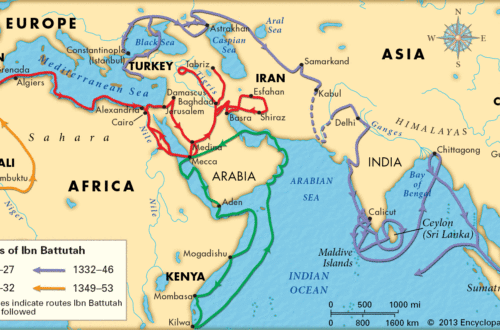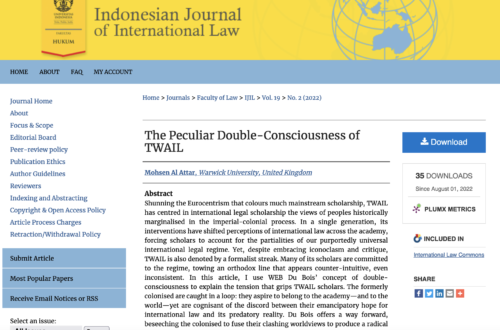
Part I: Why study international law?
1- Over the next few weeks, I will prepare a series of posts for law students on the international system. These posts are designed to provide you with a rudimentary understanding of legal relations between states and, more importantly, to address a gap in the Qualifying Law Degree.
2- Of the core modules that comprise the QLD, only two have pretensions to international law: public law and EU law. I use the term pretensions for neither of these are designed to support your study of international law and will thus not help you achieve an understanding of the international system. Instead, and because of their subject matter, these modules merely put you on notice that law and lawmaking reach beyond domestic borders. To the extent that it does happen at all, your study of international law will only take place in the third year of the degree and, even then, only if you choose the relevant electives. What is worse, you will have already internalised many of them preconceptions associated with municipal law and thus have some difficulty comprehending the complexities of the international system.
3- Designed to support domestic professional associations, the QLD necessarily adopts a state-centric approach toward the study of law. Moreover, since law is principally enforced at the state level, most practitioners will only ever deal with law from a state perspective further reinforcing the QLD’s self-imposed limitations. Yet, does a state-centric approach to the study of law remain appropriate in this day and age?
4- Consider, for example, that goods, services, capital, and manufacturing have been denationalised. By denationalised I mean that the products we consume (food, clothes, gadgets, etc.) and the activities we engage in (communication, video streaming, shopping, etc.) are hardly circumscribed by national borders. In most instances, the extraction of raw materials, the conversion into finished products, the assembly of the products, the sale, delivery, and consumption of the products take place in a multitude of jurisdictions in a manner that makes a mockery of any notions of subsidiarity. What domestic system could possible cover all of these activities? The answer bellies my critique of the QLD: it is impossible to understand either the world or our domestic legal system without possessing a grasp of treaties and thus of international law.
5- Today’s post is dedicated to distinguishing between the different types of law that comprise the international system. Most of you will have heard of municipal or domestic law and of international law. In truth, however, these are only two types of law but there are three others of equal importance. The scale looks something like this:
Municipal – Outer-State – Supranational – International – Transnational
While seemingly confusing each type or category serves a specific purpose and I explain each in turn.
6- Municipal law is the bread and butter of the QLD. Consider this the internal law of a sovereign state. If you wish to visualise it, imagine an island with arrows strewn across the beach and pointed inward: the arrows represent the law and their direction the law’s jurisdiction. Legally at least, a sovereign state enjoys autonomy over its internal laws. When studying municipal law, much emphasis is placed on the lawmaking process and institutions, the content of the laws, disputes over the laws, etc. While fascinating to a municipal lawyer, from an international perspective, these are mostly irrelevant. Sovereignty and equality mean that states can decide for themselves their preferred laws and lawmaking processes. From an international perspective, jurisdiction is the crux of the matter: does the state have jurisdiction over this topic? While the stock answer is that a state has sovereignty over virtually anything within its borders, in practice, jurisdiction is circumscribed by the agreements (or treaties) states have reached with others. More on this shortly.
7- Our second form is outer-state law. Like municipal law, outer-state law is also internal to a sovereign state; the difference is in the direction. Returning to our visual, with outer-state law, the arrows strewn on the beach are pointed out to sea. What I mean is that the law is still the product of a sovereign state but it is being applied beyond its border. Consider a statement from former UK prime minister Tony Blair. In his non-apology for slavery, Blair made the following statement: ‘It is hard to believe that what would now be a crime against humanity was legal at the time.’ What does Blair mean by legal? Did millions of people across the African continent assent to their enslavement or to their massacre if they resisted? Blair is referencing a particular type of outer-state lawfulness: to him, just as to many other European states, British legal authority extends beyond its borders. Despite being internal to the state, outer-state law is distinct from municipal law for it does not have force of law within its own borders: did anyone in the early 19th century think it lawful for Parliament to enslave British citizens?
8- This leads to our third type: supranational law. Law students pursuing a QLD are familiar with supranational law (even if some scholars choose not to identify it as such). EU law is supranational law. Here we are referencing forms of law that exist above the state—are supra to it—but that possess the same characteristics of state law. For example, the European system is denoted by a legislature (the EU Parliament), a judiciary (the European Court of Justice), and an executive (the European Commission, among others). To a great extent, Europe has come to embody a supra or a super state! Of course, since sovereignty can never be fully surrendered, a supranational regime is contingent on continued consent of the member states, a point made abundantly clear by Brexit. Returning to our island visual, imagine a series of arrows pointed upwards, they reach a floating castle, traverse the windows, and then curve downward returning to the state (forming a half-circle trajectory). A group of states give shape to the supranational regime and, in turn, are shaped by it.
9- Only now can we speak of international law. Since outer-state laws are likely to collide with one another—the struggle for scarce resources that plays out between hunter-gatherer societies is merely up-scaled globally—and since perpetual war is hardly in anyone’s interest, states reach agreements as to how they will regulate their interactions. Sometimes these treaties are between two states—bilateral treaties—and other times—multilateral treaties—involve multiple states. In all instances, however, a treaty represents the participating states commitment to the negotiated terms. The differences between international law and our previous three forms of law are self-evident but worth reviewing nevertheless: a) international law applies both internally and externally, b) is decided not by one but numerous sovereign states, c) is the product of compromise rather than authority, and d) eschews the formal lawmaking institutions of the state. Like supranational law, however, international law is contingent on the voluntary assent of the participants: the partial surrender of jurisdiction (never sovereignty) can be revoked at any time. Here we have two islands denoted by a series of identical arrows departing from their respective shores, crisscrossing in the sky, and landing on the other.
10- We close our scale with transnational law. The roots of this form of law stretch as far back as World War II though only properly sprouted in the late twentieth century, some argue with the formation of the World Trade Organisation (WTO). Returning to our visual, consider a shell enveloping the planet with arrows pointed downward reaching every jurisdiction. What is different between transnational and international law is what matters most. While international law allows for individual qualifications to the agreement, meaning states can limit the reach of the treaty, transnational law does not, operating with an all-or-nothing approach. Moreover, transnational law most always involves a temporal commitment that stretches for many years, sometimes decades, into the future, binding both current and future governments. Finally, the networks associated with the development of transnational law are of such breadth and scale that they render withdrawal from the framework near impossible.
11- While the QLD mostly teaches you about municipal and supranational law, from this post you can see that there are others. I conclude with two important remarks. First, all forms of law described above interact in a variety of ways and are central to the operation of both the international system and individual domestic systems. There is nothing positive or negative about any of them, save for outer-state law which often involves a denial of the sovereignty of others (colonialism, the slave industrial complex, and the routine bombing of Third World states are egregious reminders of outer-state law run amuck). It is vital to avoid developing a preference for one or the other types of law as this will skew your understanding of the world and its attendant legal forms.
12- Second, with continued time-space compression, which I will explain in a later post, the production of international, supranational, and transnational law will accelerate. For all its airtime, Brexit or the fetishisation of municipal law (‘take back control’) represents an anomaly and one that will quickly clash with denationalised goods, services, capital, and manufacturing. The authority and capacity of the empire-states of old ended some years ago. You could even say that the state itself is now an anachronism with borders only used to stir nationalist—often chauvinist—sentiment and to keep others out. Beyond this, however, borders are mostly losing their relevance.
13- What is to come is anyone’s guess, however, since the answer lay not in municipal law, you might consider pursuing deeper understanding of the other forms.




2 Comments
H
This was a fantastic article! Exams are coming to an end for me at the University of Canterbury and planning ahead for what to study next year is looming on my mind. I am now going to dedicate at least 2 or 3 out of 14 papers on international law. We have “Principles of Public International Law” and “World Trade Law” (aka International Economic Law). Anyway, keep up the good work!
Mohsen al Attar
Excellent news! I gave a lecture at Canterbury some years ago; you’ve good some quality international law scholars to work with. Good luck with the papers.